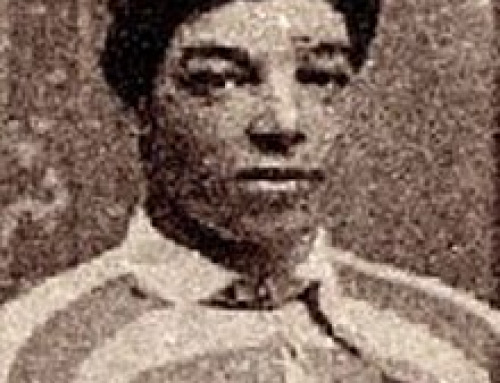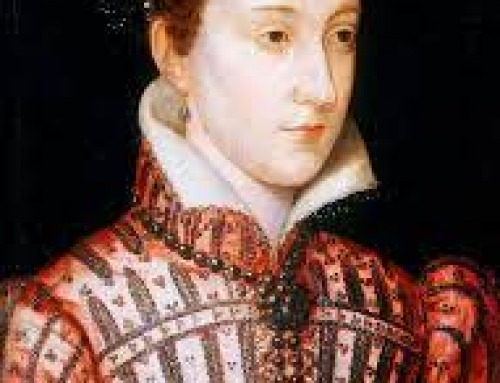Rob Roy was born at Glengyle, at the head of Loch Katrine, as recorded in the baptismal register of Buchanan, Stirling on the 7th March 1671. His parents were the local Clan MacGregor Tacksman, Donald Glas MacGregor, and Margaret Campbell. He was also descended from the Clan MacDonald of Keppoch through his paternal grandmother. In Gaelic, his name is Raibeart Ruadh MacGriogair – the Ruadh meaning red (because of his red hair), and this was anglicised to Robert Roy. He also became known as Red Rob or alternately Red MacGregor,. As a boy, he learned hillcraft, hunting, and surviving in the wild. These skills would serve him later in his life The MacGregors are part of the Clan Gregor, a noble and proud clan, who claimed to descend from the ancient clan Alpin, However, over the years, their reputation was tarnished, They were powerful and owned a lot of land around the Loch Katrine area. So much so that rival clans in the area became very jealous of the MacGregors and successive Scottish kings, with an eye on their land, sanctioned acts of cruelty against them. Over time the MacGregors were persecuted, and their lands were taken. During the reign of James VI they were forced to survive by thieving, and even their name was outlawed. Children could not be christened MacGregor, and they were not allowed to carry arms or congregate in groups of more than 4, but by the time Rob Roy was born, the rules against them had been somewhat relaxed, and the clan were mostly left in peace to get on with their lives, but the prejudice remained, and the reputation of Clan MacGregor was damaged forever. In later life, Rob would regularly sign his name as Robert Campbell, Campbell being his mother’s maiden name. In January 1693, at Corrie Arklet farm near Inversnaid, he married Mary MacGregor of Comar. The couple had four sons: James Mor MacGregor (1695–1754), Ranald (1706–1786), Coll (died 1735) and Robert (1715–1754—known as Robìn Òig or Young Rob). It has been argued that they also adopted a cousin named Duncan, but this is not certain. Along with many Highland clansmen, at the age of eighteen Rob Roy together with his father joined the Jacobite rising of 1689 led by John Graham, 1st Viscount Dundee, known as Bonnie Dundee, to support the Stuart King James VII, whose flight from Britain had been declared by Parliament to be an abdication, following the Glorious Revolution of 1688. Although victorious in initial battles, Dundee was killed at the Battle of Killiecrankie in 1689, deflating the rebellion. Rob’s father was taken to jail, where he was held on high treason charges for two years. Rob’s mother Margaret’s health failed during Donald’s time in prison. By the time Donald was finally released, his wife was dead.

Like many other Scottish clan chiefs during the 17th and 18th centuries, MacGregor operated an extralegal Watch over the cattle herds of the Lowland gentry in return for protection money, which was used to feed the families of his tenants and clansmen. Any cattle that were stolen from herds under his Watch were either retrieved, or paid for in full. Rob Roy became a respected cattleman—this was a time when cattle raiding and selling protection against theft were commonplace means of earning a living. Rob Roy borrowed a large sum to increase his own cattle herd, but owing to the disappearance of his chief herder, who was entrusted with the money, Rob Roy defaulted on his loan. As a result, he was branded an outlaw, and his wife and family were evicted from their house at Inversnaid, which was then burned down. After his principal creditor, James Graham, 1st Duke of Montrose, seized his lands, Rob Roy waged a private blood feud against the Duke, both raiding his cattle and robbing his rents. Another version of this series of events states that Rob Roy’s estates of Craigrostan and Ardess were forfeited for his part in the Jacobite rising of 1715. The Duke of Montrose acquired the property in 1720 by open purchase from the Commissioners of Enquiry. In 1716 Rob Roy moved to Glen Shira for a short time and lived under the protection of John Campbell, 2nd Duke of Argyll, also known as Red John of the Battles, “Iain Ruaidh nan Cath”. Argyll negotiated an amnesty and protection for Rob and granted him permission to build a house in the Glen for the surrendering up of weapons. “Traditionally the story goes that Argyll only received a large cache of rusty old weapons A sporran and dirk handle which belonged to Rob Roy can still be seen at Inveraray Castle. Rob Roy only used this house occasionally for the next three or four years. In July 1717, Rob Roy and the whole of the Clan Gregor were specifically excluded from the benefits of the Indemnity Act 1717 which had the effect of pardoning all others who took part in the Jacobite rising of 1715. Rob Roy also participated in the Battle of Glen Shiel in 1719, in which a British Government army with allied Highlanders defeated a force of Jacobite Scots supported by the Spanish. However two of the Jacobite commanders, Lord George Murray and the 5th Earl of Seaforth, were badly wounded. Some accounts claim that Rob Roy himself was wounded, but the actual text of Ormonde’s account of the battle provides no evidence for this claim. Instead, it states that Seaforth was wounded: “Finding himself hard-pressed, Lord Seaforth sent for further support. A re-inforcement under Rob Roy went to his aid, but before it reached him the greater part of his men had given way, and he himself had been severely wounded in the arm.

Sometime around 1720 and after the heat of Rob Roy’s involvement at the Battle of Glen Shiel had died down, Rob Roy moved to Monachyle Tuarach by Loch Doine. Sometime before 1722, he finally moved to Inverlochlarig Beag on the Braes of Balquhidder. Rob Roy’s feud against the Duke of Montrose continued until 1722, when he was forced to surrender. Later imprisoned, he was finally pardoned in 1727. He died in his house at Inverlochlarig Beg, Balquhidder, on 28 December 1734, aged 63 as a piper played I Shall Return No More. He was buried on New Year’s Day 1735 at the Old Kirk Yard in Balquhidder 1735. Buried alongside the famous outlaw are his wife and two of his son’s. Or at least his gravestone is there. Some locals suggest that he was buried elsewhere for safety, to ensure that he lay undisturbed by rival clans. At least that’s what their fathers told them and theirs before!

Fact or Fiction
Glengyle House, on the shore of Loch Katrine, dates back to the early 18th century, with a porch dated to 1707, and is built on the site of the 17th century stone cottage where Rob Roy is said to have been born. Since the 1930s, the Category B-listed building had been in the hands of successive water authorities, but was identified as surplus to requirements and put up for auction in November 2004, despite objections from the Scottish National Party
In 1723 Highland Rogue by an anonymous author was published during Rob’s lifetime and enhanced his reputation. It has been suggested that Daniel Defoe was the author, but that theory is now mostly discredited.
The Rob Roy Way, a long distance footpath from Drymen to Pitlochry, was created in 2002 and named in Rob Roy’s honour.
Descendants of Rob Roy settled around McGregor, Iowa, United States, and in 1849 it was reported that the original MacGregor seal and signet was owned by Alex McGregor of Iowa. The Scots Gaelic clan seal was inscribed “S’ Rioghal Mo Dhream” (“Royal is my race”). The signet was a bloodstone from Loch Lomond, and was sketched by William Williams.
In 1878, the football club Kirkintilloch Rob Roy was founded and named in his memory.
Adaptations of his story have also been told in film, including the silent film Rob Roy (1922); the Walt Disney Productions film Rob Roy, the Highland Rogue (1953); and the Rob Roy (1995) film directed by Michael Caton-Jones, starring Liam Neeson as the title character, and shot entirely on location in the Scottish Highlands. The 1995 Rob Roy film was also novelized in that year by Donald McFarlan based on the screenplay by Alan Sharp.

In 1894, a bartender at the Waldorf Hotel in New York City created the Rob Roy cocktail in honour of the premiere of Rob Roy, an operetta by composer Reginald De Koven and lyricist Harry B. Smith loosely based upon Robert Roy MacGregor.
In 1817 the book Rob Roy was published by Sir Walter Scott. This novel greatly romanticised him and is the primary source of the legend that’s known today.
In 2017, a new statue of Rob Roy was commissioned to be installed in Peterculter, Aberdeen. The sculptor appointed was David J. Mitchell, a graduate of Grays School of Art in Aberdeen. The statue was publicly unveiled at a ceremony on the bridge on 16 September 2017
The Trossachs region is part of the Loch Lomond and Trossachs National Park. over the years, it has become known as Rob Roy MacGregor country. Why? Because this picturesque part of Scotland was where the folk hero Rob Roy MacGregor lived and worked.
Biographies of Rob Roy have been written by Nigel Tranter in 1965, W.H. Murray in 1982, and the most recent by David Stevenson in 2004
Sir Walter Scott’s world famous former house Abbotsford, in the Scottish Borders, contains Rob Roy’s gun in its armoury room
Immortalised in song and prose maybe the most famous musings about Rob Roy’s Grave were penned by William Wordsworth while on a walking tour of Scotland in 1803.
MacGregor’s final resting place can be found on the Rob Roy Way just outside Kingshouse, the inscription attests once more to his rebellious and indomitable character. It reads: MacGregor Despite Them.
If you want to visit a place that both served as a film set and was visited by Rob Roy, the only option is Drummond Castle. MacGregor was housed in this picturesque castle with adjoining terrace gardens after he was wounded in the battle of 1689.
Legend has it that when the soldiers came to evict the MacGregor’s his wife was branded and raped by the government men.
The Trossachs region is full of places associated with Rob Roy. You can visit his grave at Balquhidder, or the site of his final home at Inverlochlarig. See the cave where he is reputed to have hidden near Inversnaid, and climb to the viewpoint called ‘Rob Roy’s View‘ overlooking Loch Lomond.
Rob Roy was known throughout his life for messing with the authorities. During the Jacobite revolts, he opposed the Protestant English Royals and as a drover he stole from the rich. Apparently that he gave to the poor too is more debated. For over a decade he fought against all attempts to capture him as an outlaw. All of this was enough to popularly make Robert MacGregor the Scottish Robin Hood. While it’s not entirely clear to what extent he fought for social justice, his rebellious nature has long made him a symbolic figure of the Scottish resistance.





